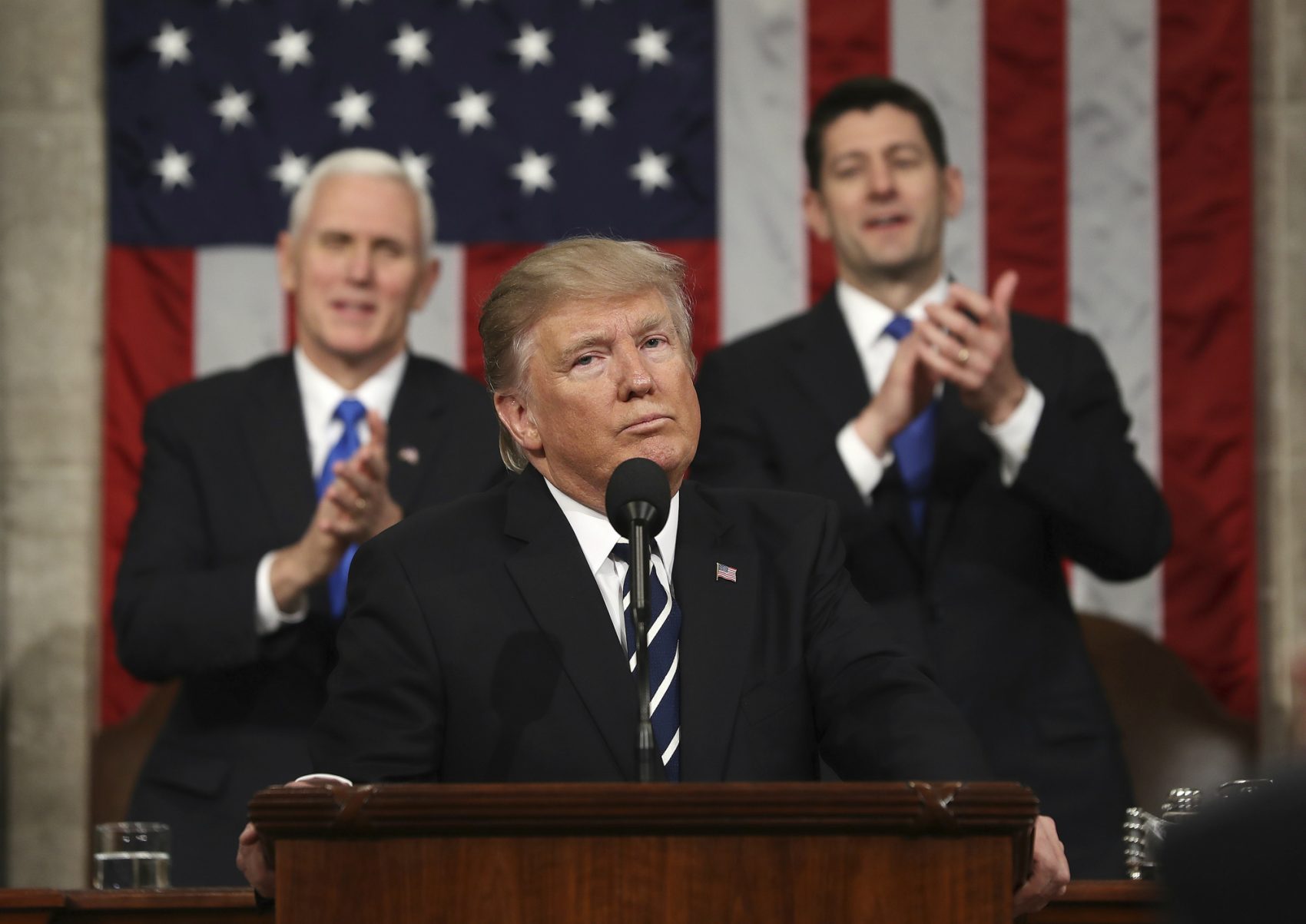Advertisement
Commentary
Extreme Vetting Of The President: New Rules For News Outlets

News organizations that carry President Donald Trump’s press conferences and speeches via cable, broadcasting or streaming video jeopardize their very own purpose and credibility. By enabling the transmission of falsehoods, misrepresentations or exaggerations without immediately identifying them as such, news providers potentially become liars themselves.
To lie is to knowingly spread falsehoods. The duty of a news organization is to bring noteworthy events and ideas to the public while accurately informing the audience of the veracity, context and relevance of the information. But this presents a technical challenge during a live talk or a presentation by just one speaker, such as the president, because one view dominates. Immediately fact-checking of his statements would require news organizations to interrupt his talk, but that is precisely what needs to be done to ensure the public is not misled.
Immediately fact-checking of [President Trump's] statements would require news organizations to interrupt his talk, but that is precisely what needs to be done to ensure the public is not misled.
While the tone of Trump’s live address to Congress was softer than his previous presidential speeches, his mischaracterizations persisted. He said 94 million people are out of the labor force, but that number includes people who are not looking for work, such as retirees, parents caring for children and teens over 16 who are in school. In January, about 7.6 million people were unemployed, according to the Bureau of Labor Statistics. Trump stated that the U.S. has lost “more than one-fourth of our manufacturing jobs since NAFTA was approved,” but most of those losses were due to advances in technology, not the trade agreement. He also said that most of the people convicted for terrorism-related offenses since 9/11 came from outside the U.S., after a report by the Department of Homeland Security determined that national origin is an “unreliable indicator of terrorist threat.”
Trump’s presentation to the Conservative Political Action Conference at National Harbor in Maryland was loaded with whoppers transmitted live to the public on Feb. 24. He said “Obamacare covers very few people,” when the previous administration estimated that the Affordable Care Act enabled 20 million people to obtain health coverage. He wrongly described the U.S. as having open borders when the Mexican border is already fenced for roughly 700 miles. He said regulations are crushing the economy but gave no examples.
During his Feb. 16 press conference, Trump claimed that he “inherited a mess at home and abroad” when the economy is actually in very good shape and ISIS is on the defensive. He characterized the roll-out of his executive order banning travelers from seven countries as “perfect” when it was chaotic and largely blocked by the courts. Only one journalist in the room challenged a misstatement: Trump’s exaggeration of his electoral college win. The other mischaracterizations went out live, undisputed.
President Trump’s misstatements are more than a matter of bias, more than a matter of interpretation; most bolster his agenda. In other words, they are propaganda. As a maximalist communicator who believes in repeating the message at every opportunity, Trump is using the wealthiest, most powerful news organizations in the world to sell his political program. By providing Trump’s talks and speeches live, unedited or without comment, news organizations give up their power and duty, allowing Trump to use them as part of his arsenal in gaining an asymmetric policy advantage in Washington.
Lying by officials can result in inaccurate agenda setting, bad regulations, discrimination, squandering of the nation’s resources, wasting taxpayer dollars, wrongful wars and worse. News outlets will become a real enemy of the people if they don’t provide accurate information to prevent this from happening.
What is to be done? News organizations should not post on their websites or transmit any video or audio from Trump or any of his deputies unless it has been vetted—fact checked and balanced with a slide, crawl or comment that members of the audience will clearly see and hear as they assess the president.
This approach is better than allowing the president to finish speaking before evaluating what he said or cataloging the deceptions and posting them on a website later. Viewers tune in and out unpredictably. They don’t all wait for the following panel discussion or website analysis. That’s why the president’s assertions have to be verified as soon as they are presented to the public. If they aren’t, they will likely be perceived as truths.
By providing Trump’s talks and speeches live, unedited or without comment, news organizations give up their power and duty, allowing Trump to use them as part of his arsenal in gaining an asymmetric policy advantage in Washington.
There will be times when the president has information critical for the nation to hear, such as during a major crisis or disaster. News organizations had better prepare for that day by starting now to separate fact from fiction quickly, as the public will be particularly vulnerable to anything the president says during an emergency.
The public may not be fond of the press, but it has clear expectations. According to a Fox News poll taken in February, 55 percent of respondents believed the country would be better off if the press covered the president aggressively instead of giving him the benefit of the doubt (38 percent).
Newsrooms will have to develop factual rapid response teams that can call out a lie as fast as a judge calls a serve during a tennis match or a referee calls foul during a football game. The final result will be a more level playing field where the public will not be misled when the president goes out of bounds.
